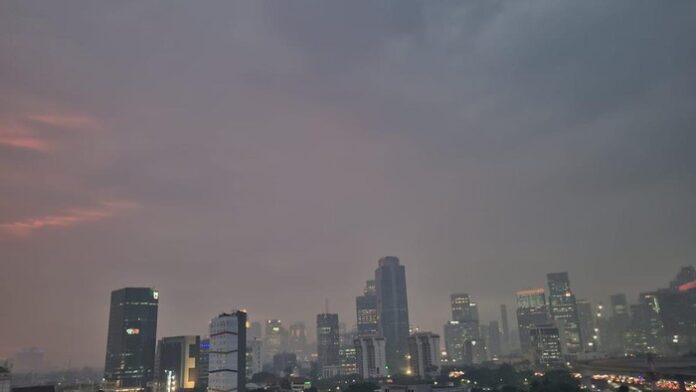
The escalating air pollution concerns in DKI Jakarta have spurred the government into exploring a range of solutions. Among these, the National Disaster Management Agency (BNPB) is employing cutting-edge weather modification technology (TMC) as a short-term strategy to induce rainfall in the DKI Jakarta region.
Abdul Muhari, who serves as the Head of the Data, Information, and Communication Center for Disaster Management at BNPB, has emphasized that weather modification serves as a swift response when a city finds itself ensnared in the clutches of severe air pollution. Beyond the boundaries of DKI Jakarta, this innovative weather modification approach is also being deployed in several other urban centers, including Bandung and Semarang.
In his words, “We have embarked on the implementation of TMC, a directive issued by the President to address the prevailing air quality concerns. This endeavor isn’t confined to Jakarta alone but extends its reach to Bandung, Semarang, and beyond, with activities spanning from the 19th to the 21st of August,” as articulated by Abdul Muhari during a virtual press conference, as accessible on YouTube Kompas, dated Tuesday, the 22nd of August 2023.
This concerted weather modification initiative is being executed collaboratively with several instrumental agencies, including BMKG (Meteorology, Climatology, and Geophysics Agency), BRIN (Research and Innovation Agency), TNI (Indonesian National Armed Forces), and Polri (Indonesian National Police).
The primary objective of this collaborative effort is to stimulate rainfall at a frequency of at least 2-3 times per week, aimed at purging the atmosphere of airborne pollutants. It’s acknowledged that the effects of pollution become more pronounced during the zenith of the dry season, spanning August and September 2023, when the absence of rain exacerbates the issue.
It’s worth noting that the current pollution levels echo those recorded earlier in the year, up until mid-May 2023, when consistent rainfall blessed the region. During this period, the cleansing effect of regular rainfall mitigated the tangible impacts of air pollution on the populace.
To expound on this phenomenon, Abdul Muhari elucidated, “Why wasn’t the pollution evident earlier this year? It’s because consistent rainfall was effectively flushing away pollutants, thereby maintaining air quality. However, in the current dry season, there’s no such natural purification process, and as a consequence, we’re acutely perceiving air quality issues due to the prolonged presence of pollutants,” offering a comprehensive explanation for the situation.
Nevertheless, Abdul Muhari affirmed the government’s commitment to instituting comprehensive, long-term measures to combat air pollution in the coming years. These initiatives are designed to proactively address the root causes of pollution and usher in lasting improvements in air quality.
“While we’re firmly committed to the formulation and implementation of enduring policies for environmental restoration, our current focus remains on the immediate, short-term strategies that can be swiftly executed. At the very least, these measures will remain in effect until the conclusion of the dry season. Even if daily rainfall isn’t guaranteed, we are targeting a frequency of 2-3 times per week,” added Abdul Muhari, elucidating the dual approach of short-term intervention and long-term planning.
Furthermore, Abdul Muhari noted that the efficacy of weather modification has been challenged in some areas due to the dearth of rain cloud formation.
These regions, encompassing South Sumatra, Lampung, southern West Kalimantan, southern Central Kalimantan, South Kalimantan, the southern part of Sulawesi, Papua from its central to southern regions, and pockets of Java, Bali, and Nusa Tenggara, have witnessed limited cloud formation, rendering weather modification efforts challenging. This technique relies on the presence of suitable rain clouds into which salt is dispersed to facilitate precipitation.

















